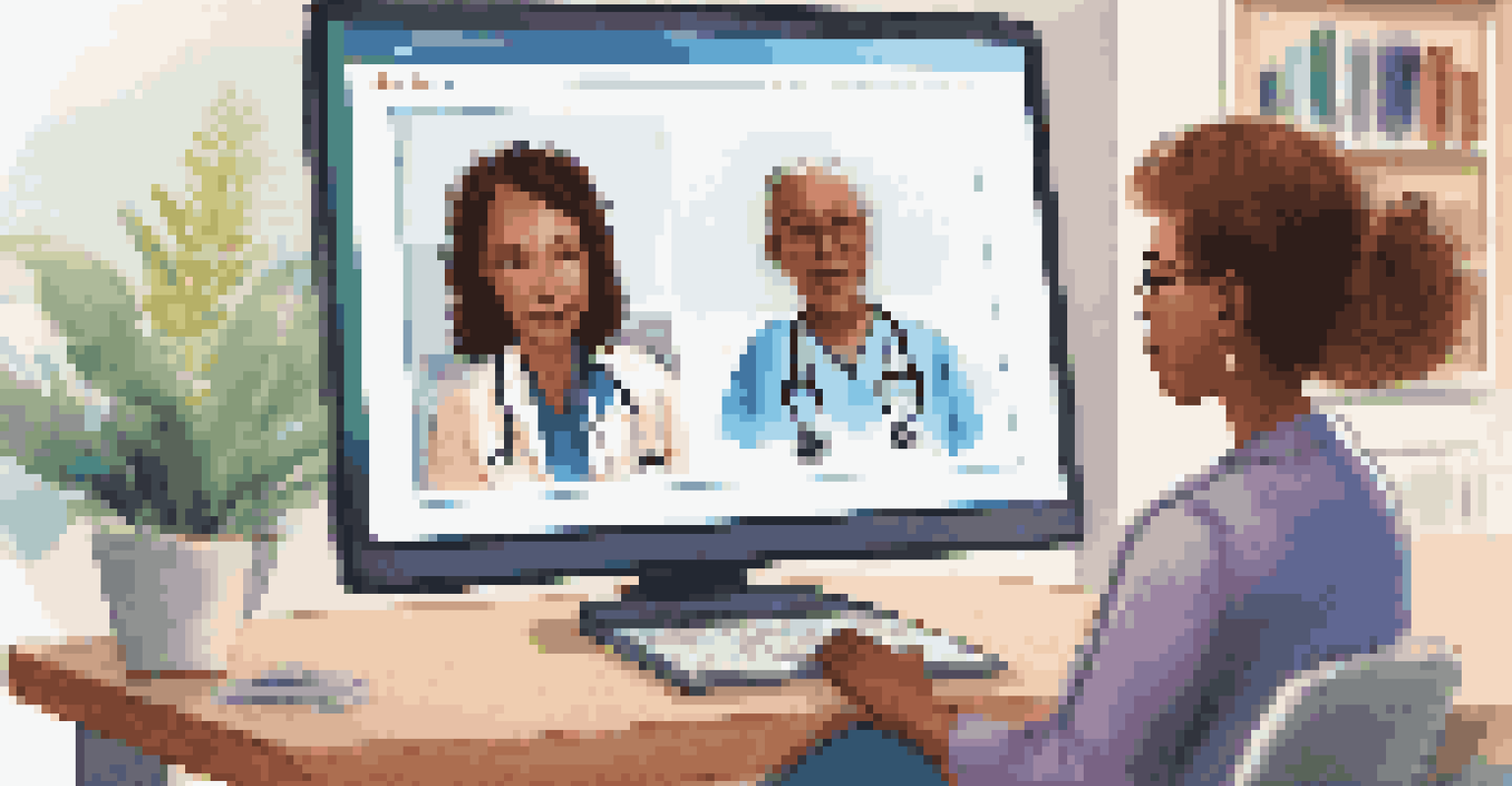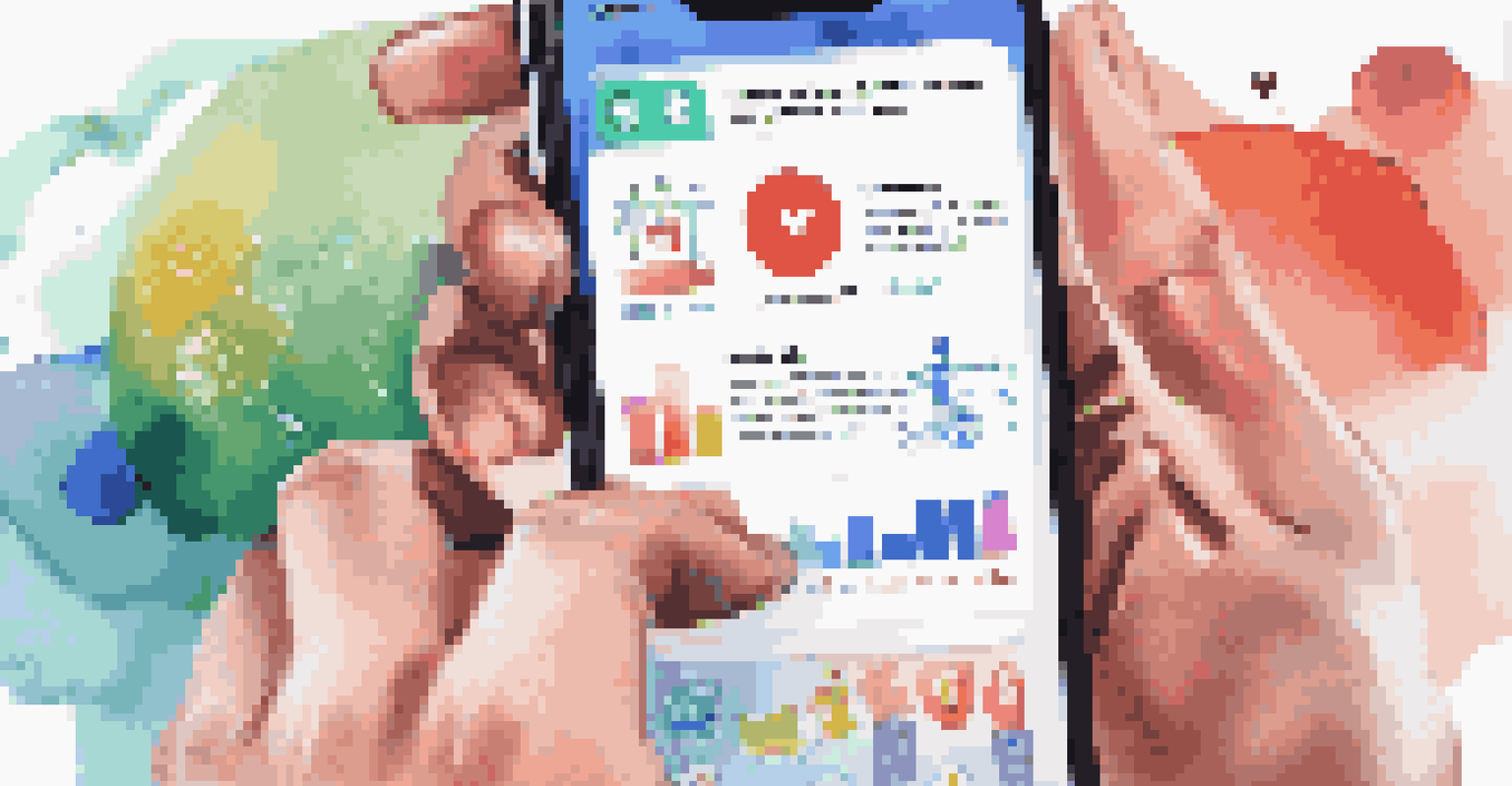How Digital Platforms Are Transforming Patient Education

The Rise of Digital Platforms in Healthcare Education
In recent years, digital platforms have increasingly become essential in healthcare, especially in patient education. These platforms, ranging from websites to mobile apps, offer patients access to vital information at their fingertips. This shift not only empowers patients but also facilitates better communication between healthcare providers and their patients.
The greatest medicine of all is to teach people how not to need it.
For instance, a patient can now easily find information about their diagnosis or treatment options through a simple search online. This immediate access to knowledge helps demystify complex medical concepts and encourages patients to take an active role in their healthcare journey. As a result, the traditional model of patient education, often limited to face-to-face consultations, is evolving into a more dynamic, interactive experience.
Moreover, these platforms allow for personalized education tailored to individual needs. Patients can choose what they want to learn about and at their own pace, making the learning process more effective and engaging.
Improving Accessibility to Health Information
Digital platforms have significantly enhanced accessibility to health information, breaking down barriers that once hindered patient education. Whether patients live in urban centers or remote areas, they can now access crucial medical resources from the comfort of their homes. This is especially beneficial for individuals with mobility challenges or those who face long travel distances to healthcare facilities.

Additionally, many digital tools offer resources in multiple languages, catering to diverse populations and ensuring that language is not a barrier to understanding health information. This inclusivity is crucial in promoting health equity and ensuring that all patients receive the education they need to make informed decisions about their health.
Digital Platforms Empower Patients
Digital platforms provide patients with immediate access to vital health information, enhancing their engagement and understanding of their healthcare journey.
As an example, telehealth services often provide educational materials tailored to the specific conditions being discussed during virtual consultations. This immediate provision of resources enhances understanding and reinforces the information shared by healthcare professionals.
Interactive Learning Through Digital Tools
One of the most exciting aspects of digital platforms is the ability to create interactive learning experiences for patients. Tools like videos, quizzes, and even virtual reality simulations make learning about health more engaging and enjoyable. This interactivity not only captures attention but also aids in retention of information, which is vital for effective patient education.
Education is the most powerful weapon which you can use to change the world.
For example, a patient learning about diabetes management might use an app that simulates meal planning and glucose monitoring. By actively participating in their education, patients are more likely to understand the complexities of their condition and feel more confident in managing it. This hands-on approach fosters a deeper connection to the material and encourages ongoing learning.
Furthermore, gamification—incorporating game-like elements into educational content—can motivate patients to engage with their health. By earning rewards or achievements, patients may feel a sense of accomplishment that encourages them to learn more and take charge of their health.
Enhancing Patient Engagement Through Social Media
Social media platforms have emerged as powerful tools for enhancing patient engagement and education. Patients can join support groups, follow health organizations, and engage with healthcare professionals, creating a community around shared experiences. This sense of belonging can be incredibly comforting for patients navigating difficult health journeys.
Moreover, healthcare organizations can use social media to share valuable information, updates, and resources, reaching a wider audience than traditional methods allow. For instance, a hospital might host a live Q&A session on Facebook, allowing patients to ask questions in real-time and receive advice from experts. This direct line of communication fosters trust and encourages patients to be proactive about their health.
Accessibility Enhances Health Equity
These platforms break down barriers to health information, allowing patients from diverse backgrounds to access personalized educational resources.
Additionally, social media often serves as a platform for patient advocacy, where individuals can share their stories and raise awareness about specific health issues. This democratization of information helps educate not just those affected but also the general public.
Utilizing Mobile Apps for Personalized Education
Mobile apps are revolutionizing patient education by providing personalized resources tailored to each user's needs. These applications can track health metrics, remind patients about medications, and offer tailored educational content based on individual health conditions. This level of customization enhances the relevance of the information provided, making it more meaningful for patients.
For instance, someone managing hypertension might use an app that not only monitors their blood pressure but also offers dietary tips and exercise recommendations specific to their condition. By integrating education into daily routines, patients are more likely to engage with the content and apply it in their lives.
Additionally, many apps now feature interactive elements, such as chatbots that can answer questions or provide insights based on user input. This immediate feedback loop empowers patients to learn more about their conditions and how to manage them effectively.
The Role of Telehealth in Patient Education
Telehealth has emerged as a vital tool in patient education, particularly in the wake of the COVID-19 pandemic. Virtual consultations provide patients with direct access to healthcare professionals, making it easier to discuss medical concerns and receive immediate feedback. This format allows for personalized education, as healthcare providers can tailor their discussions to the specific needs and questions of each patient.
Moreover, telehealth appointments often incorporate educational components, where providers can share digital resources or direct patients to relevant online materials. This blended approach of real-time conversation and digital resources enhances understanding and retention of important health information.
Interactive Learning Boosts Retention
Utilizing interactive tools like apps and social media fosters a more engaging learning experience, helping patients retain important health information.
As more patients become comfortable with telehealth, it's becoming clear that this method of education is here to stay. It not only provides convenience but also encourages ongoing engagement between patients and healthcare providers, ultimately leading to better health outcomes.
Overcoming Challenges in Digital Patient Education
Despite the many benefits of digital platforms in patient education, challenges remain. Not all patients have equal access to technology, which can create disparities in education and health outcomes. Addressing these gaps is crucial to ensuring that all patients can benefit from the resources available online.
Furthermore, the rapid evolution of digital tools can overwhelm both patients and healthcare providers. It’s essential for organizations to provide training and support, ensuring that users can navigate these platforms effectively. This may include offering tutorials or dedicated customer service to assist with technical issues.

Lastly, ensuring the accuracy and reliability of online health information is paramount. Patients should be educated on how to discern credible sources from unreliable ones, fostering a more informed approach to their health decisions.
The Future of Patient Education in a Digital World
Looking ahead, the future of patient education appears promising, with digital platforms continuing to evolve and improve. Innovations such as artificial intelligence and machine learning may lead to even more personalized educational experiences, tailored specifically to individual patient journeys. As technology advances, the possibilities for enhancing patient engagement and understanding are virtually limitless.
Moreover, the integration of wearable technology into patient education will likely become more prevalent. Devices that track health metrics in real-time can provide immediate feedback and resources, allowing patients to make informed decisions on the spot.
Ultimately, as digital platforms become increasingly integrated into healthcare, patients will be better equipped to manage their health. The goal is to create a collaborative environment where patients feel informed, empowered, and confident in their healthcare choices.